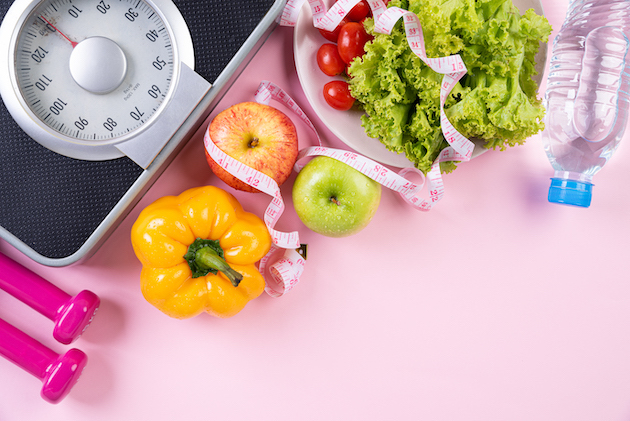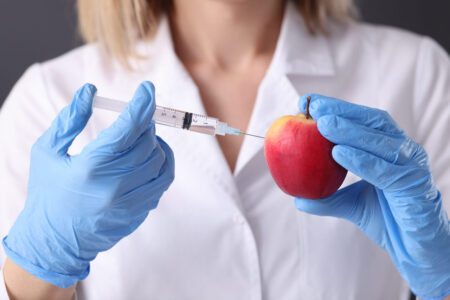Iron is a widely distributed element in nature, ranking fourth in the earth's crust. However, iron deficiency is one of the most common nutritional deficiencies in the world, and iron deficiency anemia is the most common type of anemia.
Iron plays an important role in the functioning of the body. The body needs iron to produce hemoglobin. Iron also plays a key role in the transport of oxygen from the lungs to the tissues. Iron increases resistance to stress and disease because it helps to neutralize foreign compounds. Iron is also needed to reduce fatigue and ensure normal skin color.
So what are the symptoms of iron deficiency? Healthline lists a number of symptoms of iron deficiency and iron deficiency anemia. Some of them are more common and others are rarer. I will cover the most common ones here.
1. Constant fatigue
Constant fatigue is one of the most common symptoms of iron deficiency anemia. But it is also a normal iron deficiency symptom. This fatigue comes from not having enough hemoglobin in the blood to transport the necessary oxygen. Deoxygenated tissues and muscles do not have enough strength. The heart also has to work harder to pump more oxygen-poor blood around.
Although fatigue is very common in today's fast-paced lifestyle and cannot be determined solely on the basis of this, diagnose iron deficiency, then combined with weakness, irritability, or poor concentration, the likelihood that the cause is iron deficiency is already higher.
2. Pale skin
Another very common symptom of iron deficiency is paler than usual skinThe reason again is low hemoglobin in the blood. Hemoglobin gives blood its characteristic red color, and if there is less of it in the blood, the skin also loses some of its color.
Pale skin, gums, or nails are the first things doctors look for in iron deficiency, but of course, it comes with to check with a blood testPale skin is often just a medium or strong a symptom of iron deficiency.
An easy way to check if your skin is unusually pale is to look at it this way. Go ahead and pull down your lower eyelid. The inside of your lower eyelid should be bright red. If it's pale pink or even yellow, you may have an iron deficiency. Especially for people with darker skin, this may be the only place where you can see the paleness of your skin.
3. Shortness of breath
One of the functions of iron is to transport oxygen from the lungs to the tissues. When hemoglobin is low, oxygen tends to be lacking. This means that muscles cannot perform normal activities, such as walking, enough oxygenAs a result, the breathing rate increases as the body tries to get more oxygen.
So, if you find that normal activities that you used to be able to do easily, such as walking or climbing stairs, are making you short of breath, then iron deficiency may be the cause.
4. Headaches
Iron deficiency can cause headache, especially in women who are currently menstruating. Although scientists don't yet know exactly why iron deficiency causes headaches, they have a theory. One factor may be dopamine and estrogenrelationship between levels.
There are different types of headaches, and frequent and recurring headaches are a symptom of iron deficiency.

5. Heart palpitations
Noticeable heart palpitations are one of the symptoms of iron deficiency anemia. The relationship between iron deficiency, anemia, and heart disease is still unclear, but it seems to be related. with oxygen levels in the blood.
Low hemoglobin levels in the blood make the heart pump faster to get more oxygen to the tissues. This leads to the heart working faster than normal and can have long-term effects. heart health.
6. Dry and damaged hair and skin
Dry and damaged hair and skin can be symptoms of iron deficiency. Just like other cells, the cells that grow hair also get the oxygen they need from the blood. Low oxygen levels in the blood affect their ability to grow hairThe same is true for skin. When skin cells don't get enough oxygen, the skin can become dry and cracked.
Iron deficiency is also associated with with hair loss, especially in women of childbearing age. So if your hair gets tangled in your hands when you wash it or comb it, it could be related to iron deficiency.
Iron absorption and types
Iron is found in both animal and plant foods. In animal foods, iron is present in heme and non-heme forms. In plant sources, however, it is exclusively in the non-heme form. Although our bodies contain significantly less heme iron than non-heme, heme iron is absorbed significantly better.
Heme iron from animal sources is absorbed at 15–30%, while non-heme iron from plant sources is absorbed at 2–20%. The absorption of animal iron does not depend much on what it is eaten with or how it is eaten. However, plant (non-heme) iron is a different story.
The absorption of plant-based iron can be significantly improved or impaired. For example, eating animal foods improves the absorption of plant-based iron. In other words, people who eat a mixed diet get more iron from plant-based sources of iron simply because they also eat animal foods.
However, vegetarians should not despair either. There are several ways to better absorb iron from plants. One of the most effective and probably easiest is to eat a sufficient amount with each meal. Vitamin C. It could be at least 25 mg per meal.
Several food processing methods, such as soaking, sprouting, fermenting, acidifying, juicing, pureeing, heating, and roasting, also improve the absorption of plant-based iron.
Iron absorption can also be improved by avoiding foods and drinks that inhibit absorption a few hours before and after meals. For example, coffee, tea, and alcohol inhibit iron absorption. If possible, these drinks should be avoided between meals.
Eggs are often cited as a good source of iron, without considering that they can actually inhibit iron absorption. Eggs are also said to contain a substance that prevents iron absorption. One boiled egg can reduce iron absorption by as much as 28%.
The same goes for spinach. Namely, spinach is a very good source of iron, at least when looking at its composition. Unfortunately, in addition to iron, spinach also contains a lot of phytates and oxalates, which effectively block the absorption of iron. So if you are a vegetarian and eat spinach often and especially raw, it can affect your iron levels quite significantly. However, if you heat spinach and add enough sources of vitamin C to the food, it is possible to get more iron from spinach.
One important mineral that doesn't want to fit in the same room as iron is calcium. In addition to calcium, dairy products also contain a lot of the milk protein casein. Both impair the body's ability to absorb iron. And while in general, other foods do not significantly affect the absorption of animal iron, calcium is an exception, affecting the absorption of animal iron. In particular, you should avoid taking calcium supplements with meals.
Iron absorption can also be inhibited by a lack of folic acid, vitamins B5 and B6. Folic acid is found primarily in green leafy vegetables, while B vitamins are mainly found in whole grains, seeds and nuts.
Sources of iron
The iron requirement for adults is about 10 mg and for women of childbearing age about 15 mg per day. 10 mg of iron is contained, for example, in one of the following:
- 50 g stewed liver,
- 55 g wheat bran,
- 90 g lentils,
- 400 g stewed beef.
Omnivores who eat a balanced diet usually don't need to worry about iron. However, it is an important issue for vegetarians and vegans.
Very good sources of plant-based iron are legumes (beans, lentils, peas). Nuts, seeds (especially poppy, sesame, sunflower and pumpkin seeds), dried fruits (especially rosehip and sea buckthorn berries, raisins, apricots), vegetables (such as nettle, paprika, parsley, wild garlic, broccoli, kale) are also good sources.
However, when it comes to plant sources, you need to pay attention to how they are prepared. For legumes, soaking, boiling, sprouting. For nuts, roasting. Also heating for vegetables containing phytates and oxalates.
Too much iron is not good
Men and menopausal women in particular need to remember that excess iron is not good at all. This is especially true when it comes to taking supplements. Excess iron is not absorbed and causes oxidative stress in the body, which in turn is a source of chronic inflammation. Chronic inflammation however, is the root cause of most non-communicable diseases.

Allan Randlepp
NutritionistAllan is a nutritionist and trainer whose favorite topics are lifestyle and longevity, including nutrition and physical activity.
Nutritional counseling





